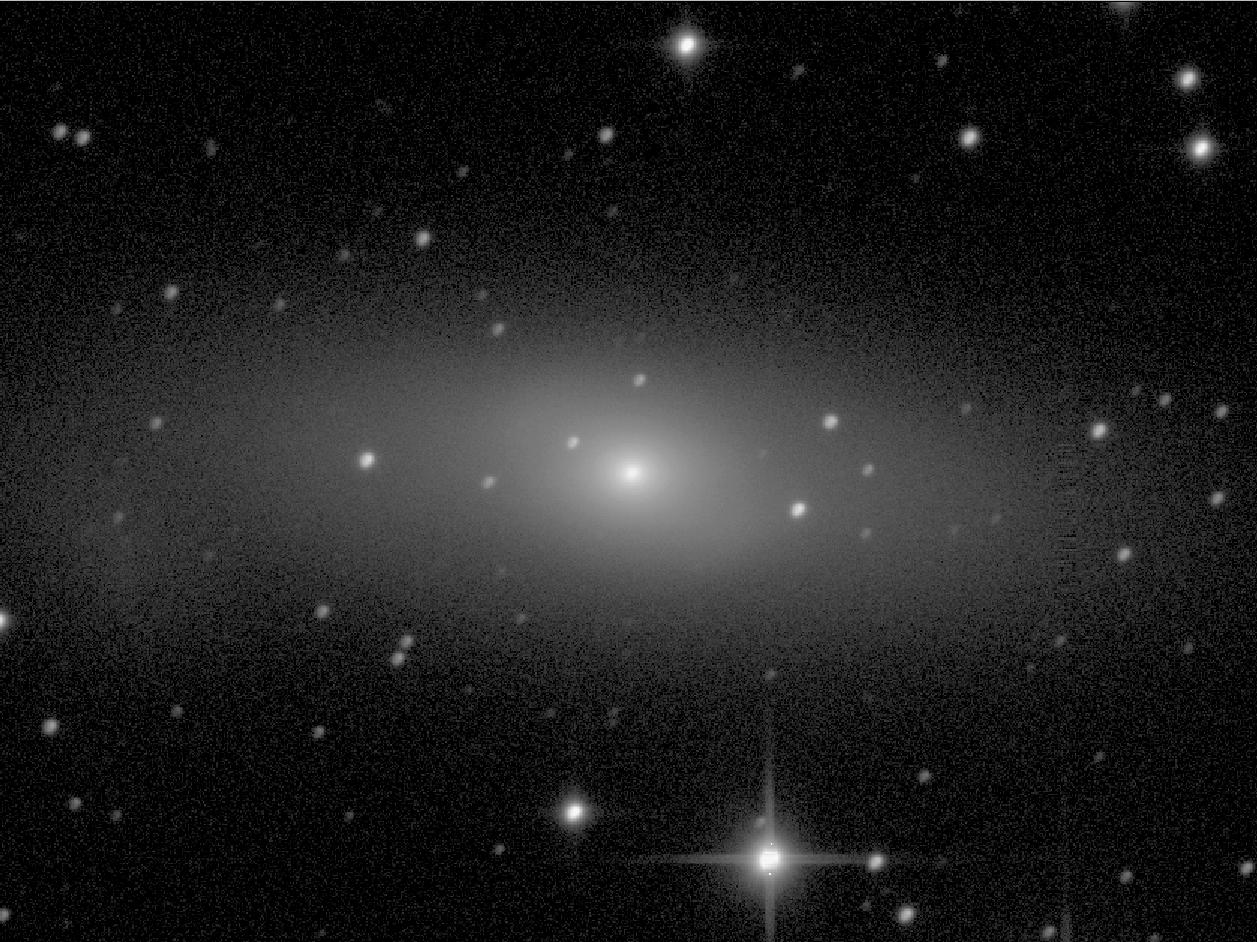

De Vaucouleurs Atlas Type: SB0-
Filter: V
Telescope: McGraw-Hill 1.3-m
North up , East left
Field Dimensions: 6.2 x 4.6 arcminutes
RC3 Type: SB(rs)0-
RSA Type: SB01(5)
Surface Brightness Range Displayed: 15.5-24.5 mag per square arcsec
Absolute Blue Magnitude: -20.2
De Vaucouleurs Atlas Description:
The bar is well-defined and includes weak ansae ; it is imbedded in an extensive faint disk. A dwarf galaxy lies off the east end of the disk major axis.
NGC 1023 has been the subject of numerous detailed studies. For example, Debattista, Corsini, and Aguerri (2002) used the Tremaine and Weinberg (1984) method to measure the bar pattern speed in NGC 1023 . These authors found that the bar of NGC 1023 ends close to corotation, implying the galaxy has little dark matter in its inner regions.
Larsen and Brodie (2000) discovered a new class of star clusters in NGC 1023 , called ``faint fuzzies ." These clusters are larger than typical open or globular clusters by a factor of ~4 on average, and in NGC 1023 they appear distributed in a ring-like configuration. Burkert, Brodie, and Larsen (2005) suggest that these unusual clusters form in the galaxy-galaxy interactions that transform a disk galaxy into an S0.